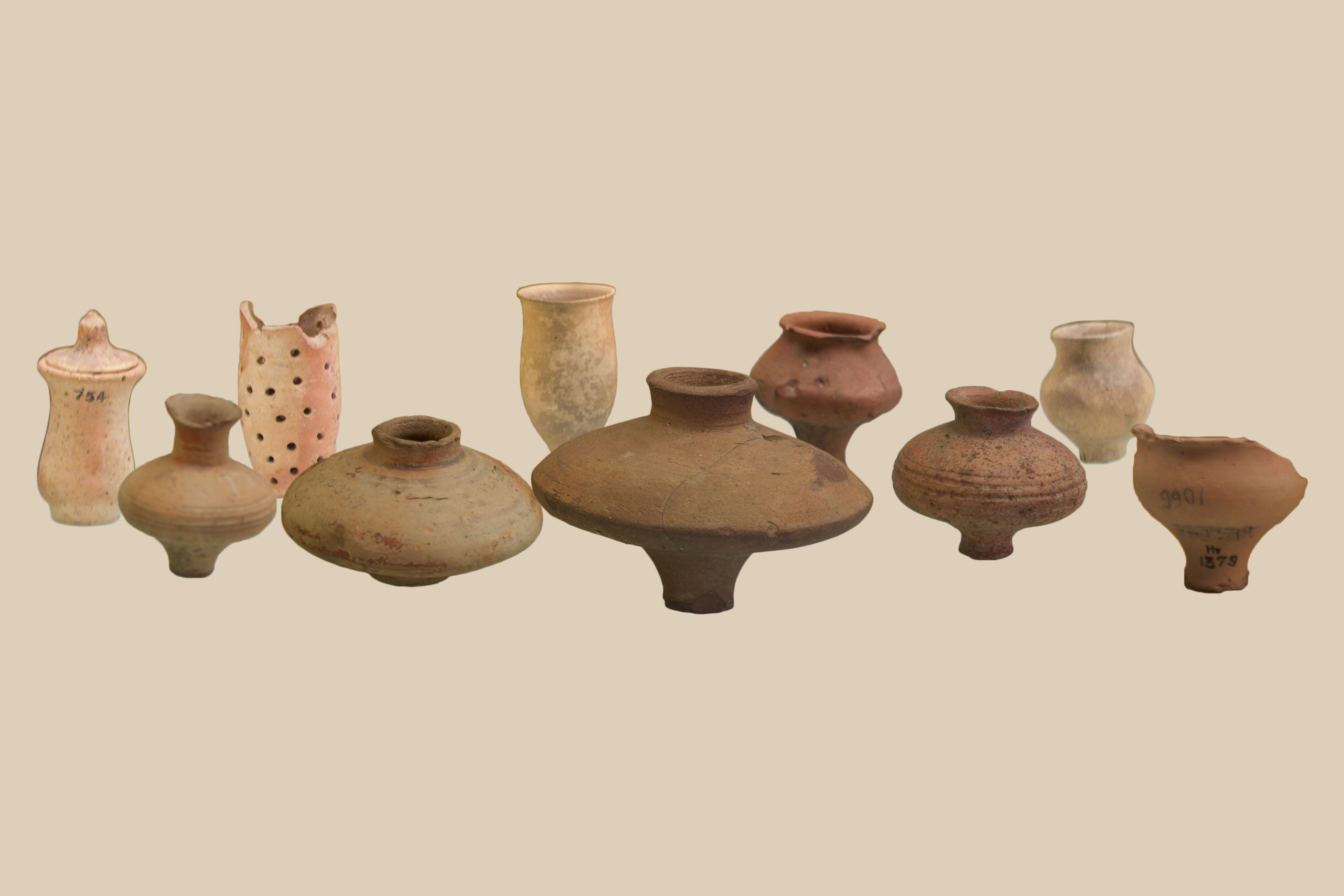Miniature Pottery
Original Location: Harappa, Punjab, Pakistan
Present Location: Chhatrapati Shivaji Maharaj Vastu Sangrahalaya, Mumbai
Date: Circa 3200 - 1500 BCE
Period: Ancient
Material: Terracotta
Objects: Pottery
Style: Harappan
Dimensions: 13 x 13.5 x 8.2 cms
Credits: Chhatrapati Shivaji Maharaj Vastu Sangrahalaya, Mumbai
In the Harappan culture the art of pottery making had reached a high level. The Indus potter was a skilled craftsman who produced plain, coloured and glazed pottery. The pottery had various shapes, rich designs, colours and a perfect finish. Along with fast wheel thrown pottery, mould made and hand formed pottery continued to be produced. Harappan pottery was made of good quality clay which was baked in controlled heat in various shapes like bowls, vases, Handi, feeder, dish, storage jar, offering stand, dish-on-stand jars, drinking vessels, cup and cup on stand, basin, casket and so on.
A large number of small and miniature pottery has been discovered from the sites of Harappan civilization. The size of this kind of pottery is about an inch. It consists of jars and pots some of which have been crudely executed, have asymmetrical lower bodies and bases. However, many of them are wheel made, having careful finish and are painted with great care. In case of these miniature pottery, the body wall thickness is significant in relation to maximum body diameter. It was made of both clay and faience which is a paste made of crushed steatite.
 Government of Indiaa
Government of Indiaa


 Recognizing the ongoing need to position itself for the digital future, Indian Culture is an initiative by the Ministry of Culture. A platform that hosts data of cultural relevance from various repositories and institutions all over India.
Recognizing the ongoing need to position itself for the digital future, Indian Culture is an initiative by the Ministry of Culture. A platform that hosts data of cultural relevance from various repositories and institutions all over India.
